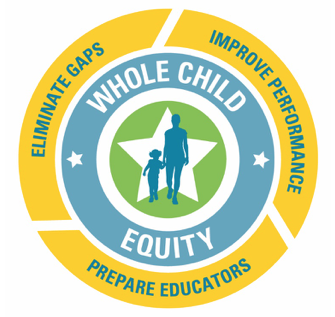
State Board Approves Budget and Legislative Priorities
State Board members approved $184.6 million in expansion requests to be included in the 2020-21 state budget to help with recovery from the COVID-19 pandemic and to advance the board’s strategic plan, which sets these overarching goals:
- Goal 1: Eliminate opportunity gaps by 2025
- Goal 2: Improve school and district performance by 2025
- Goal 3: Increase educator preparedness to meet the needs of every student by 2025
The funding requests were endorsed also by Superintendent of Public Instruction Catherine Truitt, who reminded the board in outlining her long-term priorities of her “north star”: ensuring all students have highly qualified, excellent teachers is essential for the state to improving educational outcomes.
Truitt told the board she believes the state is well positioned to make strides with three significant opportunities for change – the WestEd report that outlines steps for meeting Leandro mandates, the long session of the General Assembly, where she said there’s a strong desire for change; and the significant federal COVID-19 relief funding to help students and schools recover from learning loss caused by the pandemic.
“We are truly at an incredible time in education right now,” Truitt said. With DPI’s District and School Transformation division now playing a key role in helping the state meet Leandro goals, she said she wants to reinvigorate that area of the agency.
“I want us to build up this team so they can support districts in ways that districts haven’t been supported in for at least the last 10 years,” Truitt said.
The state will also benefit from $1.6 billion coming from a second round of federal Elementary and Secondary School Emergency Relief funds (ESSER II), she said.
“We have a moral imperative to ensure that the [funds] coming to our state for K-12 schools will do everything that it can do to ensure that students recover – both mentally and academically – from this pandemic,” Truitt said.
She also cited efforts aimed at developing human capital and reforming school accountability as key areas that will guide the Department of Public Instruction’s immediate efforts to address the effects of COVID-19, while also laying the groundwork to achieve her long-term vision: every student deserves a highly qualified, excellent teacher in every classroom.
Alan Duncan, co-chairman of the board’s Business Operations Committee, said that about $87 million in recurring funds that are part of the board’s state budget requests comprise the framework for addressing statewide learning challenges and recovery and student well-being and school safety.
“These two things go hand in hand,” Duncan said. In addition to $31.7 million designated for statewide learning challenges and recovery efforts, $55.9 million would help support student well-being and school safety, primarily with more resources for school psychologists, social workers, mental health specialists, and school nurses.
Key funding requests for COVID-19 Transition and Recovery Strategies:
- Addressing Statewide Learning Challenges and Recovery – $31,782,940
- Student Mental Health, Well Being, and School Safety – $55,896,000
- Education Workforce Development (Teacher and Principal Recruitment and Retention) – $7,478,7000
- Connecting Middle/ High School Students to Post-Secondary and Career Opportunities – $12,854,500
- School Business System Modernization: – $28,900,000 (Non-Recurring) – $37,355,000 (Recurring)
- TOTAL: $184,717,140
|

State Board Approves Revised Social Studies Standards
The State Board of Education this month ended several weeks of vigorous and passionate debate over the state’s learning objectives for social studies and approved standards that reflect a broader view and more diverse perspectives of American history.
By a narrow, 7-5 vote, the board adopted the changes to the state’s Standard Course of Study in social studies to include issues such as racism, discrimination and gender. As part of the standards revision, the board also included a preamble written by Superintendent of Public Instruction Catherine Truitt that concludes: “Let us study the past such that all students can celebrate our achievements toward a more perfect union while acknowledging that the sins of our past still linger in the everyday lives of many. Let us study the past so we can understand where it might lead us today.”
Prior to their vote, board members devoted an extensive discussion the previous day continuing to debate the proposed standards revisions from their meeting in early January. Truitt and Board Chairman Eric Davis each read letters from two citizens opposing and supporting the revised standards.
“America is the greatest country in the world, and we have a bright future if our kids learn its real history,” a Union County resident said in a letter read by Truitt, “but more importantly, the principles of freedom, God and patriotism that made it the best country in the world.
“Not until America and the American system was there a country that allowed their people to unleash their human potential and build on the foundation that government was not the ultimate power in people’s lives but was there to serve the people and be limited and controlled by the people.”
The letter that Davis read was from a former school media specialist in the Asheville area who wrote in support of the revised standards.
“Encouraging nuanced, diverse perspectives on and critical thinking about our American history does not diminish our country’s well-being or merit,” the letter writer said. “Rather, it shows that we’re a nation that’s willing to grow, evolve and mature, based on truthful and comprehensive analysis and accountability.”
In thinking about how best to frame the standards, Davis said, he and Truitt focused in particular on the issue of tone and creating the appropriate balance between “celebrating our achievements and the wonderful goals that we aspire to and have achieved in many ways as well as the opportunities to learn from our shortcomings.”
Davis said the preamble to the standards includes as its core message “the rejection of the notion that we must choose either the good or the bad of our history and, instead, it embraces the opportunity to choose the and that we can teach the successes and the shortcomings of our shared past and that we can learn from both and celebrate both as the continuing part of our progress to a that more perfect union.”
But several board members said they objected to the revised standards for giving disproportionate weight to the nation’s historical “shortcomings” at the expense of celebrating its strengths and achievements.
“In the name of balance,” said board member Olivia Oxendine, “the standards do not explore and examine and raise to the right elevation the progress this country has made past the Civil Rights era, past the passage of the 14th and 15th Amendments.”
Board member Amy White made a similar point in raising her objections, pointing to the progress the nation has achieved during the last half century, including the election of a black president and numerous black state officials, including a former chairman of the State Board of Education.
“There’s been tremendous progress,” White said. “These standards did not go far enough to couple the very diversity that we all face as we become a better America.”
Lt. Gov. Mark Robinson reiterated his assertion from his remarks in January that the revisions are divisive.
“It would be irresponsible for this board to pass these standards,” he said. “There are enough people in this state who have questions and concerns about these standards that we need to go back to the drawing board again.”
Prior to the implementation of the revised standards during the 2021-22 school year, the board will review and approve a final version of supporting documents provided to school districts as additional guidance.
|
Students Credit Success to Career & College Promise Initiative
In a presentation on North Carolina’s Career and College Promise initiative – which provides students opportunities to earn college credit and college credentials while in high school – the State Board was shown data as evidence of success and also heard stories of success directly from current and former students.
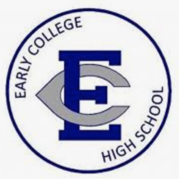 |
|
Zaniya Caine, a senior at N.C. Central University who has already lined up a position as a financial analyst at Cisco, told board members that she credits Nash-Rocky Mount Early College High school, which she graduated from in 2019, with giving her the tools to succeed.
“ECHS gave me the confidence that I needed in tackling all the opportunities that I had,” Zaniya said. “When I came to NCCU, I already knew how to stand out and how to succeed. ECHS gave me specific expertise in problem solving, teamwork, communication and especially leadership. … Early college gave me the encouragement that I needed.”
|
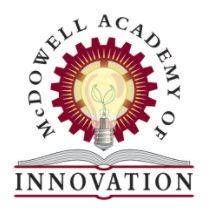
Evey Helton, now in her 13th year at McDowell Academy for Innovation, said her school provided her with key emotional and academic support even as she contended with homelessness as a 12th grader. She’s now finishing up her associate’s degree in emergency management before enrolling at Western Carolina University to pursue a bachelor’s degree in emergency and disaster management.
“None of this would have been possible without the support of my school and all these opportunities that I had through McDowell Academy of Innovation,” Evey said.
Beyond such anecdotes, North Carolina’s Cooperative and Innovative High Schools – comprised mostly of the state’s 130 early college high schools – continue to demonstrate strong outcomes for students, said Sneha Shah-Coltrane, director of DPI’s division of advanced learning and gifted education.
“Both of these students described the absolute power of the Cooperative and Innovative High School model and how the intentional support of their teachers really keep them at the center,” Shah-Coltrane said, “combined with all the opportunities to develop the soft skills, workforce skills and to follow their passions, really create one of the most successful programs our state and country has ever seen.”
The annual report to the legislature about the program includes this evidence of that success:
- Nearly half the 6,000 students who graduated last year from Cooperative and Innovative high schools also earned associate degrees from the community colleges that are partners with their schools.
- High school retention and completion rates for CIHS was above the state average, with the average CIHS rate above 95%.
- The average high school drop-out rate of CIHS programs was below the state average.
- CIHS students at community colleges received better grades, on average, than the general population of students with 85 percent averaging a passing grade of a C or better. This is 12 percent higher than the general population.
- 7,409 applications from CIHS students were accepted by UNC System four-year institutions, based on UNC System Data. This is an increase of 1,228 students from the previous school year. 2,328 applications from CIHS students were accepted by North Carolina Independent Colleges and Universities, based on NCICU data. This is an increase of 656 students from the previous school year.
|
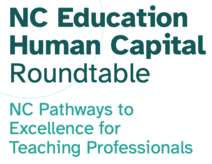
Board Reviews Proposed Reforms to NC’s Teacher Licensure Process
Continuing last month’s preview of proposed sweeping changes to the state’s teacher licensing process, members of the State Board of Education were presented this month with details of an ambitious plan aimed solving the state’s chronic shortage of teachers and insufficient diversity in the ranks of educators.
Two members of a roundtable group of representatives from a number of agencies and institutions with a stake in education, including the State Board of Education, that has been studying the issue, outlined a new approach to licensure that would emphasize teaching effectiveness over such traditional indicators as teacher exams.
Andrew Lakis, a member the state’s Professional Educator Preparation and Standards Commission, said the roundtable’s goal has been to “keep great teachers in the classroom and attract highly qualified, diverse candidates into the profession.”
But he also said the group started its work grounded in the sobering reality of the challenge the state faces.
“The pipeline is shrinking,” Lakis said. “We have hundreds of critical vacancies across the state. More than 10% of our teachers are inexperienced or uncertified. Less than 20% of our teachers identify as people of color, and only 5% of college students plan to become teachers, and that number continues to decrease.
“Yet, the roundtable was committed to this goal that every student deserves an excellent, effective teacher, and our mission was to find a way to make that happen with the stakeholders in North Carolina.”
He said the group focused on the state’s licensure system as the critical fulcrum since it governs who can teach. “It’s the major policy vessel to transform the teaching profession,” he said. “It’s key to the conversation if you want to increase the number, quality and diversity of who is in the classrooms across North Carolina.”
Essentially, he explained, the system must be based on the outcomes that teachers achieve with student learning rather than the hurdles of teacher licensing exams, which discourage many candidates and aren’t always a reliable measure of teaching effectiveness. In addition, the state needs to allow more prospective teachers to prove themselves through pathways other than traditional routes of current educator preparation programs.
“We have to open the gates to let anyone who wants to teach to have the opportunity to demonstrate their ability, with strong support for growth,” Lakis said. “That will help open up the pipeline and remove barriers … It will also help with recruitment across the state and with the diversity of our teacher workforce.”
In addition to the traditional pathway through four-year colleges of education, the roundtable proposes to allow candidates with two-year degrees to begin as apprentice teachers working with experienced educators while simultaneously earning their bachelor’s degree. Candidates would advance through a tiered system defined by clear expectations and supports.
“What’s really important in the model is a tiered licensure system,” said Tom Tomberlin, director of educator recruitment and support for DPI and a roundtable member, “so teachers aren’t just handed a list of things they have to do within three years but the structure itself moves them along.”
And instead of only a test-based measure for teachers to gain a continuing license, they should have other options to prove their ability, particularly by demonstrating their effectiveness with student outcomes, Tomberlin said.
At the opposite end of the spectrum, the group proposes, veteran teachers should be provided with opportunities to achieve advanced status and additional compensation for demonstrating leadership with other teachers.
|
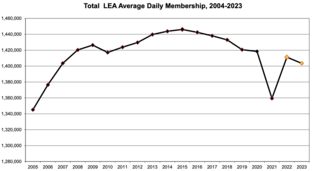
COVID-19 Enrollment Disruptions Cause Uncertainty in 2021-22 ADM Allotments
The Department of Public Instruction has achieved a track record of making accurate projections of average daily membership (ADM) when developing the funding needs of school districts across the state, but a sharp drop in enrollments this year has clouded that crystal ball.
Alexis Schauss, director of School Business Administration for DPI, told the board that this year’s enrollment declines are complicating ADM projections for next school year. School districts are funded largely through allotments based on ADM – projected or actual, whichever is greater.
“The impacts of COVID-19 places uncertainty on developing an appropriate allotted ADM going into this next budget biennium,” Schauss told the board. A graph of statewide enrollment changes since 2005 that she presented showed years of modest decline during the last several years, but a steep decline of about 60,000 students during the current year.
“Almost every LEA has this pattern to varying degrees,” Schauss said.
But she said it’s uncertain how many students will return next year from homeschooling or other alternatives to schools in their districts.
“Based on all the unknowns, our projections may not have considered what happens in the fall with regards to student membership,” she said, “which may result in a large number of LEAs needing adjustments. … What we do know is there will be an increase in ADM next year. The question is – what number will return and what grades will they return in?
“Has COVID accelerated homeschool growth for those people who are on the fence to try it, or perhaps as many LEAs have started up virtual academies, will these new schools attract more students back, including homeschoolers.
“We’re really looking at many unknowns, and they impact our ability to project the number of students which will be the 2022 allotted ADM.”
|
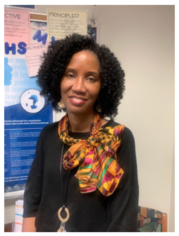
Board Recognizes Finalist for National School Counselor of the Year and 2 Schools for Global Readiness Education
State Board members honored Vanessa Barnes, the dean of students, counseling and student services at Millbrook Magnet High School in Wake County, as one of five finalists in the running for National School Counselor of the Year.
Under Barne’s leadership, Millbrook Magnet High School has been recognized nationally three times as a RAMP School (Recognizing American School Counselor Association) for exemplary implementation of the organization’s model for school counseling. She was named the North Carolina School Counselor of the Year for the 2019-20 school year.
Barnes told the board that counselors across the state have been fully engaged during the period of remote learning and hybrid instruction.
“We have not stopped providing social and emotional support, career and college readiness support, help with housing and food insecurity, equity and access, and also making sure that students have a link and a bridge to college access and academic support,” she said.
|

Board members this month also recognized two public schools for their commitment to global education under the State Board’s Global Education Strategic Plan.
Davidson Early College High School in Davidson County and Glen Arden Elementary in Buncombe County were each recognized for meeting the Prepared Level of Achievement as Global Ready Schools, joining 10 other schools that have earned the recognition.
This means that these schools have effectively implemented systems and processes to support global readiness and that many components of global education are embedded schoolwide.
To achieve the designation, each school completed a rigorous application process that included submission of an application with narratives and links to evidences that demonstrate the school’s efforts to prepare students to live, work and contribute to an interconnected world.
|
|